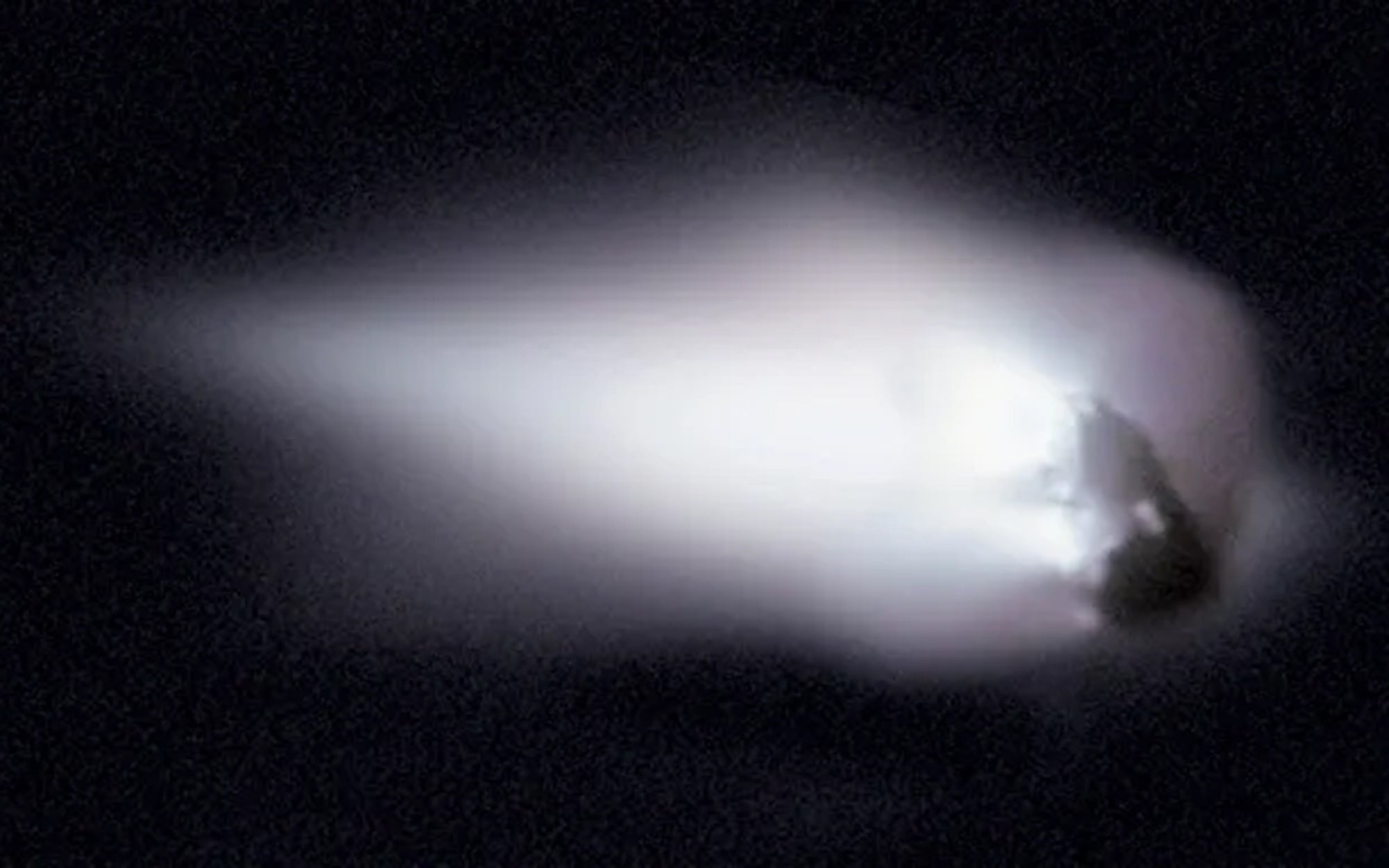One of the most famous comets is heading back in the direction of Earth. On December 9, 2023, Halley’s comet reached aphelion–its furthest point from the sun–made its turn towards our planet for its next appearance in the 2060s. But don’t worry about Halley’s return. It’s not even close to a collision course with Earth. Like all the comets we know of, it’s made of dusty ice, some of which burns off to create a majestic tail as the body approaches the sun.
Currently, the comet is further out than Neptune, a bit over three billion miles from the sun—so far that it’s out of sight for even our largest telescopes and has been since 2003. Halley’s comet will make its next swing by our planet on July 29th, 2061, right on time with its 76 year cycle.
So why is this one space rock, out of the millions in the solar system, so widely talked about, and why has it fascinated humans so intensely throughout history?

People have actually been watching it for generations, with recorded sightings as old as 240 BCE. For most of human history, we didn’t know what to call this mysterious visitor from outer space. Somewhat unsurprisingly, something so unknown and (at that time) unpredictable was widely feared and seen as a bad omen or harbinger of disruptive change. The comet supposedly heralded the defeat of Attila the Hun in 451 and the Ottoman Empire’s widespread conquest in 1456. Genghis Khan even took the comet as a sign for where to lead his armies in 1222, drastically expanding his territory and fathering many kids along the way—so many, in fact, that 1 in 200 men may be his descendents.
“Naturally no one knew these appearances were all the same comet until Halley made his discovery,” explains Richard Goodrich, author of the book Comet Madness: How the 1910 Return of Halley’s Comet (Almost) Destroyed Civilization.
Around 1705, British scientist Edmond Halley noticed three comets with strikingly similar orbits, seen in 1531, 1607, and 1682. He concluded that they were actually the same comet, passing by every 76 years, and he predicted it would appear in 1758. Although he didn’t live to see it, his prediction came true, changing our perspective of the cosmos. “The reappearance of Comet Halley, as predicted, did much to replace a world of superstition with a world of science,” says Valdosta State astronomer Kenneth Rumstay. Our solar system was rapidly expanding, with Uranus discovered soon after in 1781 and the first asteroid, Ceres, spotted in 1801.
Despite the identification and explanation of the comet as a regular part of the cosmos, Halley’s 1910 showing caused widespread panic. One astronomer pointed out that Earth would encounter the comet’s gaseous tail, filled with toxic cyanogen gas. “Peddlers sold anti-comet pills and gas-masks,” says astronomer Ramesh Kapoor from the Indian Institute of Astrophysics.
But, as we know, the world didn’t end then. Halley’s comet returned once again in 1986, now an object of scientific curiosity in the space age that was visited by multiple spacecraft to take up-close-and-personal photos. Little pieces of the comet even fall to Earth each year as the Eta Aquariid meteor shower. Halley’s is obviously one of the best studied comets, and has followed humanity throughout history with fascinating consequences—but part of what makes it so special is exactly how often it returns.
Human lifespans are around 70 to 90 years, and Halley’s 76 year orbit almost eerily resembles that timescale. “You really can mark out a human life with Halley’s orbit, and I think this shared time loop ties us closer with this particular comet,” says Ashley Benham-Yazdani, author of the children’s book Cosmic Wonder: Halley’s Comet and Humankind. Humanity uses this comet “to mark the passage of time, transforming it into a cultural touchstone,” she adds. “It has sparked in us the extremes of human emotion, inspiring awe in some and paranoid frenzy in others.”
In the 2060s, it’s probably unlikely that anyone will panic over this one comet. The 1986 appearance was already “a damp fizzle, which may not bode well for future appearances,” says Goodrich. Even if it’s not a totally spectacular show to the naked eye, planetary scientists are definitely interested. They’re keen to track the comet’s decline, monitoring how fast it loses material, and perhaps send more spacecraft for a detailed close-up, perhaps even a “sample-return mission sent to land and scoop up a piece of the Halley’s nucleus fuming its sooty smoke,” as Kapoor describes.
For most of us, it will certainly be a once-in-a-lifetime (or twice, if you’re lucky) cosmic event worth appreciating. “Those that were there for the 1986 visit will share their memories. And then, when it finally appears, we will likely take a moment to step outside, maybe with friends or family, to participate in the ancient act of observing the sky,” muses Benham-Yazdani. “This communion with the cosmos is rare for most people these days, but I hope that when it comes, it inspires a sense of wonder.”





